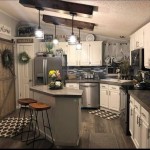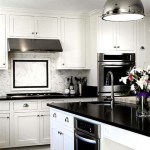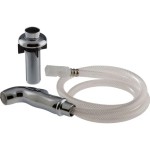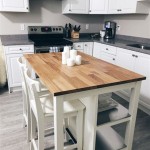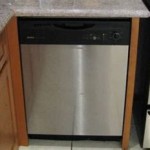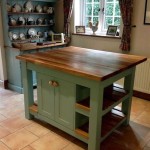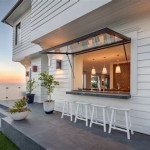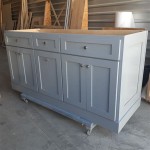```html
Mid-Century Modern Kitchen Canisters: A Timeless Blend of Form and Function
Mid-Century Modern (MCM) design, a style that flourished roughly from the 1940s to the 1960s, continues to captivate with its clean lines, organic shapes, and emphasis on functionality. This aesthetic extended to all aspects of the home, including the kitchen, where even everyday items like canisters were elevated to design statements. Mid-Century Modern kitchen canisters are more than just storage containers; they represent a philosophy that valued both practicality and visual appeal. They embody the era's optimism and its desire to create beautiful, efficient living spaces.
The enduring popularity of MCM kitchen canisters stems from a successful marriage of form and function. They are not merely utilitarian objects hidden away in a pantry; instead, they are designed to be displayed proudly on countertops, open shelving, or vintage hutches. Their attractive designs, often incorporating bold colors and geometric patterns, contribute to the overall aesthetic of the kitchen. Furthermore, MCM canisters are frequently crafted from durable materials that have proven their longevity, adding to their desirability in modern homes.
Key Characteristic: Material Innovation and Design
A defining characteristic of Mid-Century Modern kitchen canisters is the innovative use of materials that were emerging or becoming more readily available during the period. While traditional materials like ceramic and glass remained popular, the era also saw the incorporation of plastics, metals, and wood in new and exciting ways. Each material offered a unique aesthetic and practical benefit.
Ceramic Canisters: These canisters often featured hand-painted designs, bold geometric patterns, or stylized depictions of fruits, vegetables, or other kitchen staples. The ceramic material provided a substantial feel and offered good insulation, helping to keep contents fresh. Designers frequently experimented with different glazes, resulting in a wide range of colors and textures.
Glass Canisters: Clear glass canisters allowed for easy identification of contents, a practical feature that aligned well with the era's focus on efficiency. Milk glass, with its opaque white finish, was also commonly used, often adorned with simple, elegant designs. Some glass canisters were tinted in vibrant colors, adding a playful touch to the kitchen.
Metal Canisters: Stainless steel and enameled metal were popular choices for their durability and sleek appearance. Chrome accents were often incorporated, adding a touch of glamour. Metal canisters were particularly well-suited for storing dry goods, as they provided a barrier against light and moisture.
Plastic Canisters: The advent of new plastic polymers offered designers unprecedented flexibility in shape and color. Plastic canisters were often brightly colored and featured innovative locking mechanisms to ensure airtight seals. While some vintage plastic canisters may show their age, many have held up exceptionally well, testament to the quality of the materials used.
Wood Accents: Some canisters incorporated wooden lids or bases, adding a touch of warmth and natural texture to the design. Teak and walnut were popular choices, reflecting the era's appreciation for natural materials. The combination of wood with other materials, such as ceramic or glass, created a visually appealing contrast.
Key Characteristic: Distinctive Aesthetic Elements
Beyond the materials used, Mid-Century Modern kitchen canisters are recognizable for their distinctive aesthetic elements, including shape, color, and pattern. These elements contributed to the overall visual harmony of the MCM kitchen, creating a cohesive and stylish look.
Shapes: Canisters from this era often feature clean, geometric shapes, such as cylinders, squares, and cones. Soft curves and organic forms were also common, reflecting the broader design trends of the period. The shapes were often simple and unadorned, allowing the materials and colors to take center stage.
Colors: The color palettes of MCM canisters were diverse, ranging from muted earth tones to bold, vibrant hues. Avocado green, mustard yellow, orange, and turquoise were particularly popular choices. These colors were often used in combination, creating eye-catching contrasts. The use of color was intended to add personality and warmth to the kitchen, reflecting the optimism of the era.
Patterns: Many MCM canisters feature bold geometric patterns, such as stripes, polka dots, and abstract shapes. Stylized floral or botanical motifs were also common. The patterns were often simple and repetitive, creating a sense of visual rhythm. Some canisters were adorned with hand-painted designs, adding a unique and artistic touch.
The combination of these aesthetic elements resulted in canisters that were both functional and visually appealing. They were designed to be noticed and admired, contributing to the overall style of the kitchen.
Key Characteristic: Functionality and Practical Design
While the aesthetic appeal of Mid-Century Modern kitchen canisters is undeniable, their functionality was equally important. These canisters were designed to be practical and efficient, making everyday tasks easier and more enjoyable.
Airtight Seals: Many MCM canisters featured airtight seals, ensuring that contents remained fresh and protected from moisture and pests. This was particularly important for storing dry goods, such as flour, sugar, and coffee. The seals were often achieved through the use of rubber gaskets or tight-fitting lids.
Easy-to-Grip Handles: Canisters were often designed with easy-to-grip handles, making them easy to lift and carry. The handles were typically made of wood, metal, or plastic, and were ergonomically designed for comfort and ease of use.
Stackable Designs: Some MCM canisters were designed to be stackable, maximizing storage space in the kitchen. This was particularly useful in smaller kitchens, where space was at a premium. The stackable designs also created a visually appealing display, adding to the overall aesthetic of the kitchen.
Clear Identification: Many glass and clear plastic canisters allowed for easy identification of contents, eliminating the need to label each container. This saved time and effort, making it easier to find the ingredients needed for cooking and baking. The clear canisters also added a visual element to the kitchen, allowing the colors and textures of the contents to be displayed.
These functional features, combined with the attractive designs, made Mid-Century Modern kitchen canisters a practical and stylish addition to any kitchen. They were designed to be used and enjoyed, making everyday tasks easier and more efficient.
The enduring appeal of Mid-Century Modern kitchen canisters lies in their ability to seamlessly blend form and function. They are not simply storage containers; they are design objects that reflect the optimism and creativity of the era in which they were created. Their innovative use of materials, distinctive aesthetic elements, and practical design features make them a timeless addition to any kitchen, whether it is a vintage reproduction or a modern space seeking a touch of retro charm. The canisters are testament to the design principle that everyday objects can be both useful and beautiful, enriching the lives of those who use them.
```
Vintage Teak Canister Set Mid Century Modern Kitchen Storage Etsy

Set Of 5 Anodised Mid Century Kitchen Cannisters

12 Retro Collectables For The Kitchen Atomic Ranch

Vintage Mid Century Modern Ceramic Kitchen Canister Set By Holiday Designs Ebay

Mcm Mid Century Modern Plastic Kitchen Canisters Flour Sugar Etsy

Mid Century Modern Teak Wood Kitchen Canister Boxes Set Of 4 Pc At 1stdibs Vintage Wooden

Mid Century Modern Teak Canister Set Of 4 By Otagiri Chairish

Kitchen Canister Set Mid Century Modern Counter Jars For Storage And Organization In Retro Mcm Wood Salt Pepper Shakers Etsy

Mid Century Modern Rosenthal Netter Botanical Canisters Set Of 3 Chairish

Retro Canisters For Mid Century Modern Kitchen Decor
See Also

